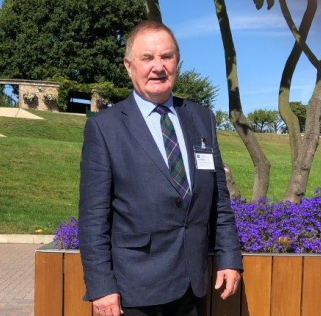
Kenny MacLeod is a Director of MacLeod Construction – an Argyll-based construction firm and timber kit manufacturer with 45 years’ experience of building new homes across Argyll and beyond.
In this interview we ask him about some of the challenges faced by rural developers and the approaches and solutions he believes are required to tackle rural housing need in a post-covid world.
RHS: The recent report from the Scottish Government’s Post-COVID Economic Advisory Group called for an acceleration of investment in affordable housing. What recommendations would you make to ensure this investment is effective within rural communities as well as urban settings?
KM: I totally agree that the post-Covid recovery period provides an opportunity to roll out a programme of house construction across rural Scotland creating jobs and training. Local Authority Planning Departments should be asked to encourage affordable housing developments and be sensitive to remote and rural locations. Urban standards for construction of roads within housing developments should be lowered.
For example, my company is building houses on the island of Jura. The only public road on the island, and from which access will be taken to the site, is single lane. The internal road system planned for 10 new affordable houses has required to be designed to city requirements, i.e. 5.5m wide with 2m pavements. If the Local Authority would allow that road design to be lowered the savings made would fund additional houses within the footprint of the site.
RHS: The pandemic has highlighted the fact that many more people could be working from home, providing additional opportunities for repopulation of rural areas alongside encouraging more entrepreneurial approaches. How can our housing support this?
KM: We are anxious to retain young, working people here but there must be jobs for them. We have lobbied the Scottish Government for funding to construct homes which include an integral workspace to allow a family to live in the home but for a business to be carried on in the workspace.
While there is Scottish Government funding for affordable housing and Scottish Government funding through HIE for workshop units there is no funding for such a combined unit. Somewhere like Achnamara would probably be ideal for that type of property, allowing young entrepreneurs to acquire a starter home or the middle-aged home worker to relocate. Local Grants should be made available to first-time buyers.
I have discussed this type of development and our inability to fund it with the Scottish Building Federation. The Federation works hard to promote apprenticeships within construction and agrees that not only would that type of development allow contractors to train young people, it would help to attract and retain young people within rural locations.
RHS: When it comes to living space, what mix of housing should we be aiming for to create sustainable communities?
KM: There should be a housing mix to provide homes for inter alia families, single people, retired people. Two bedroom cottage flats, detached and semi-detached properties ranging from one bedroom to three/four bedrooms are required. Experience during the recent Covid-19 lockdown emphasises the benefit to mental and physical health of having some garden space and proximity to open spaces for recreation.
RHS: What challenges do rural house builders face and how might these be tackled?
KM: The greatest hurdle facing development is the lack of affordable infrastructure. Water, electricity, roads and fibre-optic technology are proving to be increasingly difficult to provide, not to mention the time consuming aspect. Transport Scotland and Local Authorities are demanding an increasingly higher specification of roads and Planning Departments policies appear to favour urban style developments.
Local Authority policies for road adoption are unclear and requirements to build to adoptable standard can make rural development unaffordable, therefore, stifling community growth.
RHS: When it comes to building, are there additional considerations which need to be taken into account for remote rural locations and less accessible islands to ensure that these communities can continue to grow sustainably?
KM: Remote rural locations are by necessity more expensive to service. Housing developments tend to be small-scale but for that reason Local Authority Planning Departments should be more agile and less restrictive. The cost of obtaining Planning Permission is increased by the requirement to prepare a Masterplan even if only one or two houses are proposed for a small settlement.
Scottish Water should be encouraged to allow small developments to be served by individual septic tanks or bio-discs and the provision of water and electricity to remote rural locations should be subsidised by the Scottish Government. The cost of Impact Studies, whether traffic or water, should not fall on the developer.
Registered Social Landlords currently require housing to be built to an extremely high specification. That high standard does, of course, ensures that the houses are well insulated and easily maintained. The standard, however, drives costs up dramatically and can make small, rural developments unaffordable. Careful planning of the specification could reduce building costs but still produce warm, highly insulated and comfortable homes.
Timber frame components should be designed for off-site manufacture to suit rural and island communities, easy shipping and quick erection. My company specialises in this type of service.
Interview with Kenny MacLeod conducted 8th July 2020.
